Modernization and Improvisation: Military Equipment in Eastern Ukraine
New Ukrainian and homemade separatist equipment appears on the battlefield and training grounds in the Donbas
Modernization and Improvisation: Military Equipment in Eastern Ukraine
Share this story
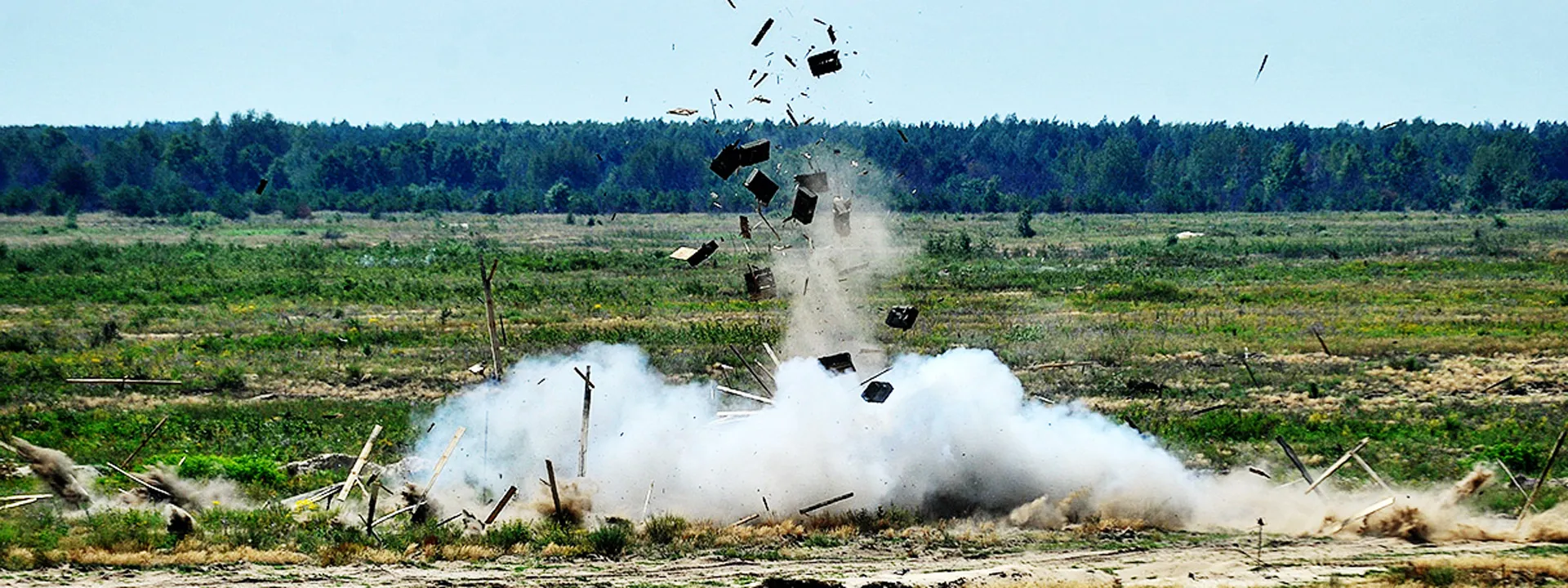
BANNER: Ukrainian weapons testing. (Source: turchynov.com)
The Ukrainian Armed Forces (UAF) and the Russian-led separatists in eastern Ukraine are upgrading their military equipment, though some of these upgrades are more makeshift than others. Recently, Secretary of the Ukrainian National Security and Defense Council (NSDC) Oleksandr Turchynov announced that the UAF will receive upgraded weapons and military equipment. Additionally, this week the Ukrainian Anti-Terrorist Operation (ATO) Press Center shared information about an “upgraded” “Grad” missile launcher that was developed by the “Republican R&D Center” of the so-called “Donetsk People’s Republic” (DNR).
Both of these modernization movements are important for the respective forces, though more so for the UAF, who do not have a neighboring country supplying hundreds of pieces of military equipment and assistance for free. However, improvements to the weapons of both the UAF and the Russian-led separatist forces raise questions about the future of the Minsk Agreements and peace process, especially considering the fact that military modernization encouraged by Ukraine’s Western allies may be at odds with the Minsk Agreements promoted by these allies.
“New” separatist artillery system
On July 24, the Ukrainian ATO Press Center published a photograph of a four-barreled artillery system allegedly being used by DNR forces near Krasnohorivka last week.
This mobile four-barreled “Grad-like” artillery system was apparently “developed” by the DNR in 2015, as indicated in the text below the barrels. The UAF passed on information and photographs of this system to the Organization for Security and Co-operation in Europe (OSCE) Special Monitor Mission (SMM) to Ukraine, as its use and deployment near the contact line would be in violation of the Minsk Agreements.
With the original BM-21 “Grad” multiple launch rocket system (MLRS), there are forty barrels (or launch tubes) that fire 122mm rockets, mounted onto a Ural truck.

It is difficult to know definitively what size the barrels are in the “new” separatist artillery system, but they appear to be similar to that of the barrels of the BM-21 “Grad.” While this system was apparently developed within the so-called DNR, similar four-barreled artillery systems have been observed elsewhere, including Libya. In the Libyan Civil War, the anti-Gaddafi rebels deployed a similar modified Grad system, though truck-mounted. Journalist Chris Chivers has described how these systems were “jury-rigged” and modified from the BM-21 “Grad,” where “one full 40-tube system has been converted to 10 trucks carrying four tubes each.”
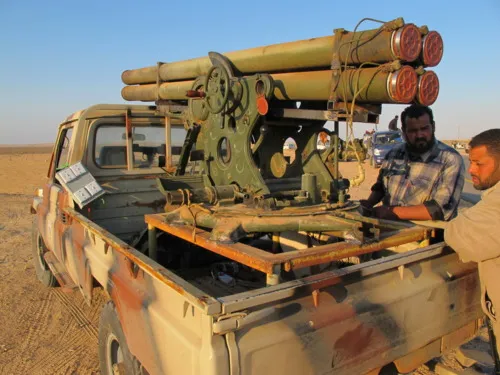
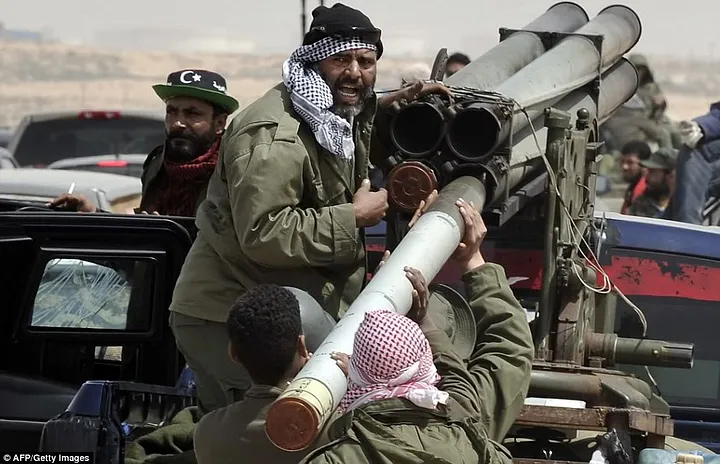
This system is a variant of the Egyptian RL-4 rocket launcher, which, as described in a Military Today article by Sergei Gurov, fires modified 122mm unguided rockets. This system is fairly mobile compared to the 40-tube Grad system, and can even be mounted on a tractor.

Compared to the “new” system developed by the so-called DNR, we can see clear similarities with these semi-improvised weapons used in recent conflicts in Libya and Syria.
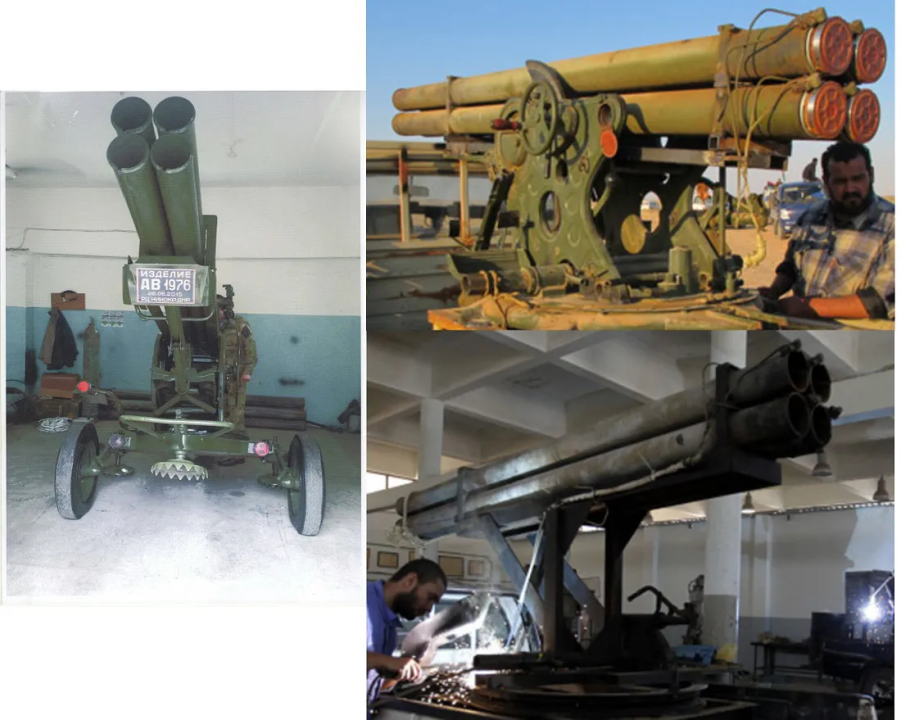
There have been relatively few military developments in the so-called DNR, as a relatively steady stream of equipment from the Russian military overshadows any incremental improvements that can be made on existing equipment. Additionally, it has been difficult to find balanced assessments of this equipment — one that the Ukrainian ATO Press Center may not be able to provide — as the OSCE SMM is frequently denied access or unable to observe due to security restrictions in non-government-controlled areas.
Most improvised modifications have been on the Ukrainian side, such as an improvised turret arrangement on a Strela-10 or an improvised vehicle developed by the far-right Azov Regiment. The alleged use of this modified “Grad” system marks a rare use of equipment developed within the so-called DNR, though it is difficult to assess if there will be significant future use or production of this system. Additionally, there is less of a need for the UAF to improvise improvements in such a way, after three years of reorganization and modernization in their own defense industry and military.
Ukrainian modernization
On July 25, Turchynov announced that the UAF will receive new Ukrainian-developed weapons and military equipment including machine guns, sniper rifles, anti-tank rocket-propelled missiles, mortars, and anti-tank missile systems. In the announcement, Turchynov stated that a top priority is to ensure the production of “large calibre” ammunition to address the issue of weapon modernization in the ATO zone, a peculiar statement as the Minsk Agreements prohibit weapons with a calibre larger than 100mm from being within 50km of the line of contact (and prohibit weapons that are multiple launch rocket systems from being within 70km of the line of contact).
As Ukraine has taken on reforms and increased transparency, the equipment and upgrades were announced in detail with accompanying photos of equipment testing at the military training facility in Honcharivske, Chernihiv Oblast.
The announced weapons included the M60 60mm mortar system that Turchynov noted is “not subject to the Minsk Agreements” — as it is of a smaller calibre than that prohibited — and is a “promising weapon to use in the Donbas conflict zone.” As it is smaller and more versatile, this type of 60mm mortar system is most useful for close, opposing positions seen in front line operations.

Also tested were the anti-tank missile “Stugna-P” 130mm (sometimes referred to as the “Ukrainian Javelin”) and the RK-3 “Corsar” 107mm systems, both prohibited by the Minsk Agreements per the 100mm calibre restriction.

Additionally, Turchynov reported that UAF reported that jamming issues with the M120–15 “Molot” (Hammer) 120mm mortar systems were corrected. M120–15 “Molot” 120mm mortars have been deployed to the UAF since March 2016; note that this system is also prohibited by the Minsk Agreements.
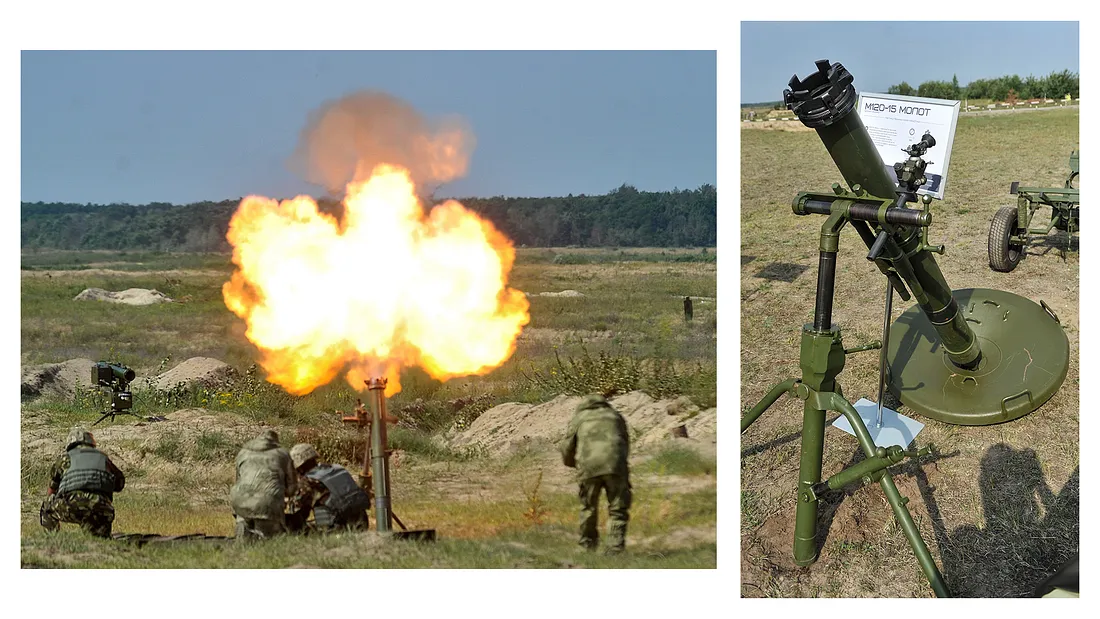
New equipment includes the AN-BK-1 “Gorlitsa” UAV (unmanned aerial vehicle) and the unmanned combat vehicle BTR “Fantom.” Ukrainian defense producer Ukroboronprom stated that the BTR “Fantom-2” uses an RS-80 rocket system that reportedly has a “Grad” effect — or, in other words, is an MLRS, making it also prohibited by the Minsk Agreements.
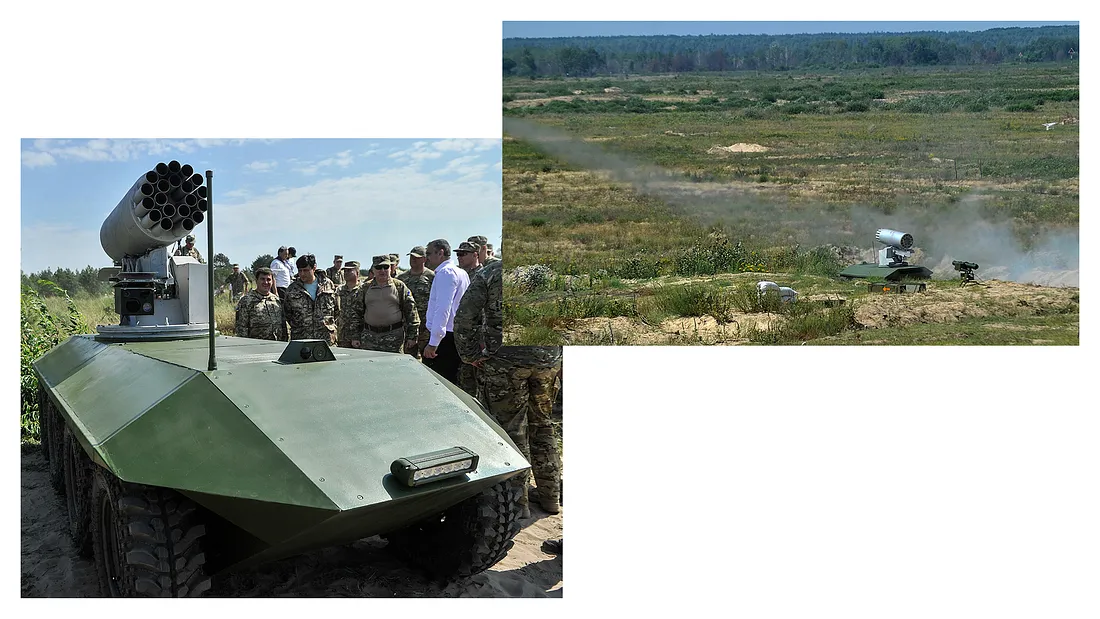
Turchynov stated than in addition to developing the UAF and Ukrainian defense industry, these developments are meant as a move to strengthen Ukraine’s position in international arms markets.
Conclusion
Ukraine’s military capabilities are growing; as @DFRLab previously reported, Ukrainian military modernization is largely on target to meet NATO standards. While these developments are signs of a stronger and more modern military in an increasingly transparent institution, they do bring into question the future of the Minsk peace process: how can Ukraine simultaneously adhere to the Minsk Agreements as they have been implored to by their Western allies, and, with the help of these same allies, modernize their military to repel Russian and separatist encroachment with weapons that do not adhere to the Minsk accords?
It should be noted that these steps toward modernization are in line with efforts to move toward a more transparent government, with public announcements by Ukrainian officials, instead of covert, Minsk-violating upgrades. While both Ukraine and the Russian-led separatists are still nominally adhering to the Minsk Agreements, the international peace agreements are still violated daily dozens, if not hundreds, of times, with the majority of these violations coming from non-government-controlled areas of eastern Ukraine. With improved Ukrainian, Russian, and even homemade separatist equipment coming to the front lines in the Donbas, the 29-month-old Minsk II Agreement seems to be on shakier ground than ever.

